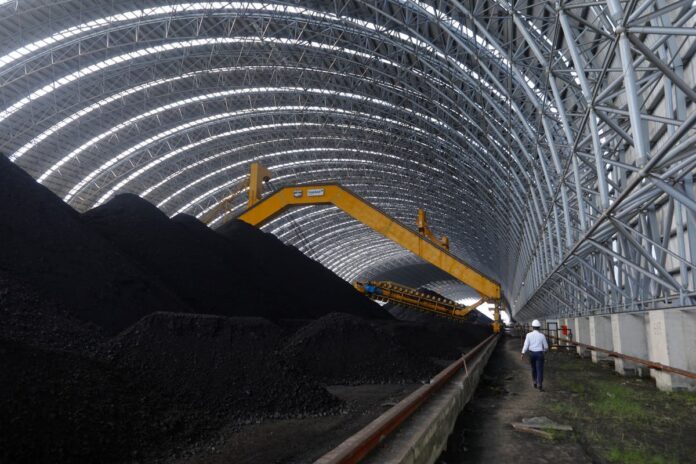EDITORS/NEWS DIRECTORS:The South Asian country of Bangladesh has built a coal power plant just a few kilometers from the world’s largest mangrove forests, the Sundarbans. This is just the latest addition to the over 8,500 coal power plants in the world. Despite being among the most polluting energy sources and the single-largest contributor to planet-warming gases, its affordability and ease of use has made it difficult for the world to kick its coal habit. At last year’s climate conference in Glasgow, the Indian government’s delegation insisted that fossil fuel use be ‘phased down’ and not ‘phased out.” Many countries claim giving it up ‘dirty’ coal would hamper living standards and delay economic growth. The International Energy Agency has stated that for the world to achieve net zero emissions by 2050 – that is, not emit anymore planet-warming gases – developed countries will need to stop using coal for power by 2030 and developing countries will have to stop using coal by 2040. Find AP’s latest coverage here.LOCALIZING THE STORY- Reporters can find out if there are any coal-fired power plants in their region. If so, how much energy do they produce and how much carbon dioxide do they emit? The Carbon Brief has a map of coal plants across the world: https://www.carbonbrief.org/mapped-worlds-coal-power-plants/- Are these local plants closing down soon? If so, what’s next for the community and workers dependent on these plants?- Are there any coal mines in your region? If yes, how long are they likely to remain open?- If these mines are likely to be closed soon or have already closed, what is next for the people who are dependent on them? Are the miners and other staff being trained to do something new?- Is the mine or coal plant being repurposed?- On a related note, reporters can see if there are any renewable energy projects in their region.- Are there any large wind or solar farms? If yes, how big are they? How much energy are they generating? These details can be a easy way to connect this global story about a coal-fired power plant to audiences in your region.- Policy stories: Is the state/city/region looking to move away from fossil fuels or doubling down on their usage?- How is the Inflation Reduction Act set to affect their local economy? Will it take away jobs, or lead to new ‘clean energy’ jobs?- Reporters can look into what their local leaders are saying about coal, decarbonization, and climate change.PUBLISHABLE CONTEXTCoal is a sedimentary rock that began to form about 300 million to 360 million years ago when organic matter settled deeper and deeper under layers of mud. Today, coal is mined through multiple methods and accounts for a third of all energy worldwide. The top coal consumers and producers in the world today are China, India, and the United States. The Bangladesh plant will burn close to 4.72 million tons of coal annually, emitting about 14.8 million tons of planet-warming gases to produce 1,320 megawatts of power.While this has prompted concerns from environmentalists who are worried about more carbon dioxide being spewed into the atmosphere and the impact it will have on the nearby mangrove forests, the world’s largest power plants, such as the Tuoketuo Power Station in China, emit at least five times more carbon dioxide than the Bangladesh plant.China has the greatest number of coal-fired power stations. As of 2022, there were 1,110 operational coal power plants in China, which is nearly four times the number of such power stations in India, which is ranked second. The United States ranks third with 240 coal power plants.Coal accounts for 44% of the total carbon dioxide emissions and is the single biggest source of the global temperature increase above pre-industrial levels. Carbon dioxide is the primary planet-warming gas produced from human activity. If humans stop burning coal completely, it will go a long way to prevent further global temperature increase and as a consequence limit the worst effects of global warming. At the same time, coal was also the cheapest source of energy for many decades. Encouragingly, solar energy is fast replacing coal as the cheapest source of energy in many parts of the world. RESOURCES- The International Energy Agency is the premier global agency for tracking the world’s energy requirements and current situation. They publish an annual report on the world’s current energy scenario. A link to their latest report is here: https://www.iea.org/reports/world-energy-outlook-2022- This is the IEA’s data on coal: https://www.iea.org/fuels-and-technologies/coal- The U.S. Energy Information Administration collects data on coal use in the country: https://www.eia.gov/coal/annual- This report examines the benefits that the Indian state of Tamil Nadu can receive by repurposing its coal plants: https://climateriskhorizons.com/research – The climate think tank Ember has data on fossil fuels as well as renewable energy from across the world: https://ember-climate.org/data/ – The Climate Action Tracker analyses various countries’ work and stated policies related to shifting to clean energy: https://climateactiontracker.org/- Global Energy Monitor has great data on various sources of energy. How and where they are produced: https://globalenergymonitor.org/RELATED COVERAGE- Report: Global crises can speed up move to clean energy- Climate Questions series – COP27: Climate Change, Biodiversity, Energy and Equality- After six years, UN climate summit returns to Africa___Localize It is an occasional feature produced by The Associated Press for its customers’ use. Questions can be directed to Katie Oyan at koyan@ap.org.


